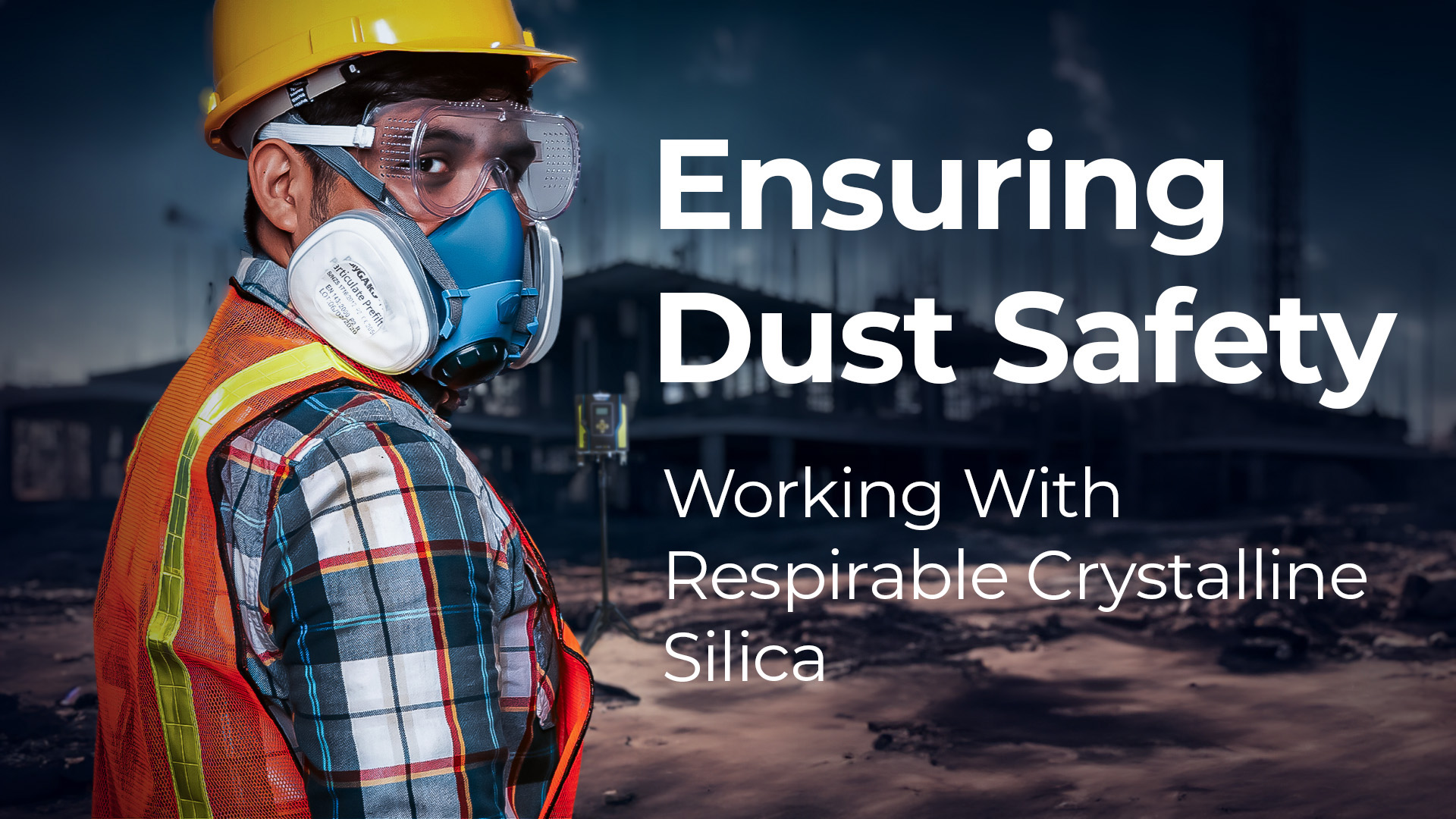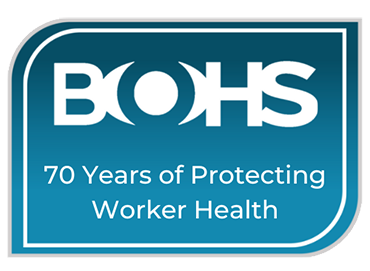Dust safety in the workplace is of paramount importance, especially when it comes to silica dust. Silica, a natural substance prevalent in various materials like rocks, sand, and clay, can transform into hazardous dust during industrial processes. The Health and Safety Executive (HSE) in the United Kingdom provides essential guidelines to ensure compliance with regulations and control workplace exposure to respirable crystalline silica dust (RCS). Complying with these guidelines is not just a legal requirement; it's a vital step in safeguarding employee health and preventing lung disease.
The Health and Safety Executive (HSE) estimates that about 13,000 deaths each year are linked to past exposure to dust and chemicals at work. Silica is associated with approximately 4,000 deaths annually from COPD and around 500 UK construction workers die from silicosis each year.

1. Prevention of Lung Disease: A Priority
Employers need to take responsibility for preventing lung diseases caused by exposure to silica dust. This can be achieved by implementing measures that control and minimize dust generation. Techniques such as water suppression and local ventilation systems are effective in reducing airborne dust particles and minimising the risk of dust-related lung diseases. Investing in personal or deployed dust monitors can help raise awareness of immediate exposure or "events" that release more dust, and this can be a game-changer in protecting workers' health. Being proactive in preventing dust not only protects employees but also ensures compliance with the Control of Substances Hazardous to Health Regulations 2002 (COSHH).
(Brief overview of COSHH here)
2. Risk Assessment: Identifying Sources of Exposure
Conducting a thorough risk assessment is a cornerstone of silica dust management. Employers must identify potential sources of silica dust exposure within the workplace and evaluate associated risks. Factors such as the nature of work, materials used, and the duration of exposure are integral to this assessment. Recognising these risk factors is vital for devising effective control measures.

3. Control Measures: Reducing Exposure
Once risks have been assessed, it is incumbent on employers to implement control measures that reduce exposure to silica dust. These measures may encompass the adoption of alternative materials or processes that generate less dust, the provision of suitable Respiratory Protective Equipment (RPE), the Use of personal and area dust detection monitors, and the promotion of workplace hygiene practices.
4. Training and Information: Employee Awareness
Ensuring that employees are well informed about the risks associated with silica dust exposure is paramount. Employers should provide appropriate training and information, educating workers about the hazards of dust inhalation and the control measures in place to mitigate these risks. This includes instruction on the correct use of RPE and other protective measures. Employee awareness is crucial for creating a safe work environment and achieving compliance with HSE guidelines.
5. Health Surveillance: Monitoring Employee Well-being
In cases where employees face significant exposure to silica dust, health surveillance becomes imperative. Health surveillance entails regular monitoring of workers' well-being to detect any early signs of lung disease. Timely detection allows for swift intervention, potentially preventing the progression of serious health issues.

6. Potential Future developments for Respitary Crystalline Silica RCS regulations
Concern has been growing towards how the UK responds to the risk of silica dust, leading to discussions between the government and industry, The APPG Silicosis Report 01-23 offers key clinical and regulatory recommendations for enhancing workplace safety related to silica dust. Clinically, it proposes:
- Declaring silicosis as a notifiable disease
- Establishing accessible RCS exposure records
- Introducing occupational health services in GP surgeries
On the regulatory side, it advocates for:
- Mandatory silica risk education
- An industry awareness campaign
- Lowering the WEL (Workplace Exposure Limit) for silica
Ensuring dust safety, particularly in managing silica dust, is not just a legal requirement; it's a moral obligation for employers. Adhering to the guidelines laid out by the Health and Safety Executive (HSE) is crucial for creating safer workplaces and mitigating the long-term health effects of dust inhalation.
Prioritising prevention, conducting risk assessments, implementing effective control measures, providing education and training, and, when necessary, engaging in health surveillance collectively contribute to dust safety and employee well-being.
A concerted effort in managing dust, complying with regulations, and safeguarding health ensures a healthier and safer work environment for all.
Shawcity offers a wide selection of online dust detection and air quality instruments. For more information or to speak with a team member, please contact them at solutions@shawcity.co.uk or 01367 889553.
Shop The Trolex Air XS Portable Mounted Silica Monitor Here
Sources
-
‘Control of exposure to silica dust: A guide for employees’, Health and Safety Executive, viewed 26 September 2023, https://www.hse.gov.uk/pubns/indg463.htm.
-
‘Occupational cancer burden research’, Health and Safety Executive, viewed 26 September 2023, http://www.hse.gov.uk/cancer/.
-
‘Silica Dust Awareness Training | Silica Dust Health Hazards’, Human Focus, viewed 26 September 2023, https://humanfocus.co.uk/blog/do-you-need-to-worry-about-silica-dust/.
-
‘Silica - Technical guide to managing exposure in the workplace’, WorkSafe Queensland, viewed 26 September 2023, https://www.worksafe.qld.gov.au/injury-prevention-safety/hazardous-exposures/silica-technical-guide.
-
‘What is Silica Dust? | Risks & Safety Measures’, High Speed Training, viewed 26 September 2023, https://www.highspeedtraining.co.uk/hub/what-is-silica-dust/.
-
‘Control of exposure to silica dust: A guide for employees, Health and Safety Executive, viewed 29 September 2023, https://www.hse.gov.uk/pubns/indg463.htm.
-
‘Silica Dust Exposure Training | Silica Dust Health Hazards’, Human Focus, viewed 29 September 2023, https://humanfocus.co.uk/blog/do-you-need-to-worry-about-silica-dust/.
-
‘Crystalline Silica: Employer Information’, National Institute for Occupational Safety and Health, viewed 29 September 2023, https://www.cdc.gov/niosh/topics/silica/workers.html.
-
‘silica dust | silicosis | lung disease in construction’, British Safety Council, viewed 29 September 2023, https://www.britsafe.org/publications/safety-management-magazine/safety-management-magazine/2023/silica-dust-a-hidden-danger/.
-
‘Silica Awareness Training | Silica Dust Hazards Australia | Respirable’, AlertForce, viewed 29 September 2023, https://alertforce.com.au/silica-awareness-training/.
- ‘Health surveillance at work’, Health and Safety Executive, viewed 22 September 2023, https://www.hse.gov.uk/pubns/books/healthsurveillance.htm.
- Health and Safety Executive (HSE), 2023. Control of exposure to silica dust: A guide for employees. Available at: [Accessed 29 Sep. 2023].
- Health and Safety Executive (HSE), 2023. Silica dust - Cancer and construction - Managing occupational health risks in construction. Available at: [Accessed 29 Sep. 2023].
- WorkSafe ACT, 2023. Silica dust - WorkSafe ACT. Available at: [Accessed 29 Sep. 2023].
- Health and Safety Authority, 2023. Crystalline Silica Dust Information Sheet - Health and Safety Authority. Available at: [Accessed 29 Sep. 2023]

-1.png)









